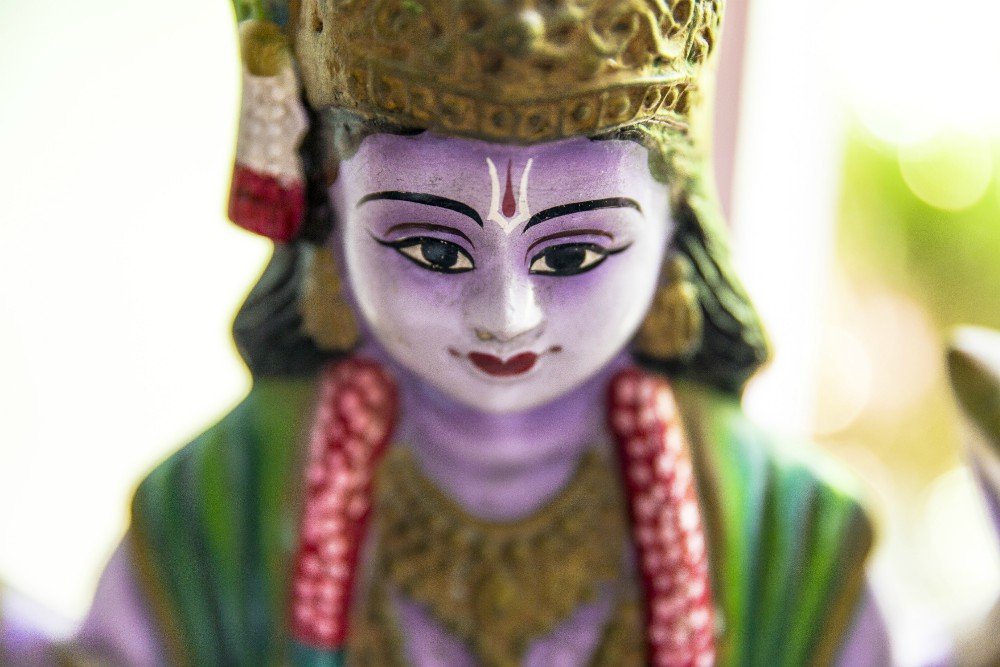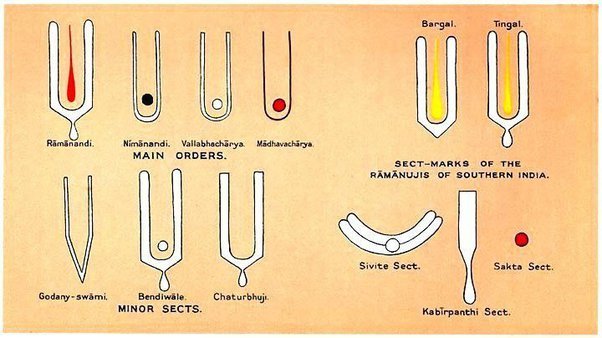Dhanvantri
Product Design || Full-end-to-end Research
Dhanvantri is a mobile application that provides authentic information on Ayurvedic lifestyle and ideologies, along with natural remedies for common skin issues.
Time 3 months
Role Product Designer
Team 1
Challenge
Craft a user-centered digital solution centered on authentic Ayurvedic lifestyle guidance, augmented with natural remedies for common skin issues. This entails presenting Ayurvedic principles in a visually engaging format, ensuring accessibility and reliability for holistic wellness seekers.
Project Flow
My project followed the Stanford Design thinking model, progressing through the stages of Empathize, Define, Ideate, Prototype and Test.
Phase 1: Empathize
My app design project began with a personal journey. As I entered adolescence, I noticed profound changes in myself and my peers, both internally and externally, shaping our self-perception.
Secondary Research
Discovery: Curiosity drove me to explore the common challenges of adolescence, like acne and dandruff. Through my research, I found that stress and hormones were big factors in causing these issues. Traditional treatments often involved chemicals with potential side effects, but I was drawn to the natural remedies of Ayurveda, which offered a safer alternative.
Resources:
Harvard Health Blog. "Stress May Be Getting to Your Skin, But It's Not a One-Way Street." Available at: https://www.health.harvard.edu/blog/stress-may-be-getting-to-your-skin-but-its-not-a-one-way-street-2021041422334
Bupa UK. "Does Stress Cause Skin Problems?" Available at: https://www.bupa.co.uk/newsroom/ourviews/does-stress-cause-skin-problems
Adyant Ayurveda. "Ayurvedic Treatment for Skin Disease in Bangalore." Available at: https://adyantayurveda.com/ayurveda-treatment-for-skin-disease-in-bangalore/#:~:text=Ayurvedic%20Treatment%20for%20Skin%20Disease%20involves%20a%20combination%20of%20internal,%2C%20aloe%20vera%2C%20and%20sandalwood.
Ayurveda Institute UK. "Ayurveda for Skin Disorders: Eczema, Psoriasis, and Dermatitis." Available at: https://www.ayurvedainstitute.co.uk/ayurveda-skin-disorders-eczema-psoriasis-and-dermatitis/
Maharishi Ayurveda Medical College, Bhopal. "How is Ayurveda Different from Allopathy?" Available at: https://www.mamcbhopal.com/how-is-ayurveda-different-from-allopathy.php#:~:text=Ayurveda%20focuses%20on%20naturally%20curing,to%20cure%20ailments%20and%20diseases.
Kerala Ayurveda Limited. "Ayurveda vs. Allopathy." Available at: https://www.keralaayurveda.biz/blog/ayurveda-vs-allopathy
Inspiration for the App
Empowered by my research, I was motivated to develop an app advocating the Ayurvedic lifestyle, particularly for youth. Key to success was grasping my target audience's preferences and challenges, enabling me to craft a tailored app that meets their needs.
Primary Research
To assess user interest and potential market opportunities for my concept, I conducted an online survey via SurveyMonkey. With nine tailored questions, I distributed the survey across platforms such as Facebook, WhatsApp, and UX forums, targeting friends and community members.
What is your name?
Where do you currently reside?
What is your age?
How does your lifestyle currently look like?
What is your current diet like?
How often do you fall ill?
Did you ever use any kind of medication for skin issues?
Are there any side effects for the medication?
Through online survey, a total of 45 responses were received. A significant amount of information was collected that helped me understand and create a better platform for users.
Outcome
Due to significant user interest in both India and the UK, I've chosen to focus on these two regions as the primary demographic for my concept. This decision is based on the high demand for Ayurveda-related apps in these markets, enabling me to effectively cater to the diverse needs of users in India and the UK.
Phase 2: Define
User Persona AND Empathy Mapping
After completing primary and secondary research, the next step was creating a user persona to represent the primary platform users. Once the user persona was established, my subsequent task was to develop empathy map to fully grasp the user's viewpoint.
Competitor Analysis
I analysed competitors extensively to gain insights into their features, online marketing strategies, subscription models, and app reviews provided by users. Additionally, I synthesized this data into a comprehensive strengths and weaknesses assessment.
Drawing from our competitor analysis, we've identified key strategies to distinguish our product:
Align app features with our core mission, vision, and values.
Craft a user-friendly and visually appealing UI/UX design.
Enhance promotional content across digital and traditional platforms.
Implement a free subscription model.
Phase 3: Ideate
Affinity Map
In the ideation phase, I conducted user interviews with three participants to gather insights into their preferences and needs. The design decisions for the app were informed by these interviews. Subsequently, I synthesized the data gathered from these interviews to create an affinity map.
Using the affinity map, I extracted the key insights:
Users prefer natural skin remedies for long-term effects, avoiding side effects of conventional methods.
Users seek personalized resources for a healthier lifestyle.
Users desire reliable guidance on food choices throughout the day.
Users are interested in aligning activities with their body's energy levels.
Users prefer visually engaging and simplified explanations to understand complex information about the human body.
Users prioritize credible information when seeking guidance on skincare, nutrition, lifestyle choices, and understanding the human body.
How Might We?
Continuing to the "How Might We" phase, I generated questions based on the key insights gathered from interviews. Subsequently, I brainstormed and listed potential solutions to each question, exploring various approaches to meet users' requirements.
Branding
Utilizing insights gained during exploration and user understanding, I developed a worksheet to crystallize the essence of the brand.
In my quest for a unique brand identity, I explored Ayurveda and unearthed the deep meaning behind Dhanwantari, the esteemed deity of Hindu medicine. Inspired by his legacy, I decided to name the app "Dhanvantri," encapsulating the spirit of Ayurveda and its cultural heritage. With the tagline "Embrace Your Health," we aim to inspire users to prioritize their well-being.
Next, I curated a mood board featuring logos of Ayurveda-related companies in the UK and India, drawing inspiration for my initial logo sketches. Simultaneously, I delved into researching the Dhanvantri deity, exploring symbols associated with him.
To enhance the brand's identity, the logo was carefully crafted to include symbols associated with Dhanwantari, aligning with Ayurveda's core principles and the deity's significance in medicine.
Exploring the brand's colour palette was engaging. After evaluating multiple schemes against the mood board, I chose a sophisticated logo colour as it represents qualities like stability and reliability. The Sanskrit language was selected for the logo typeface to honour Ayurveda's roots. Following logo design, I developed a concise Brand Book, establishing visual identity and messaging standards. Afterwards, I created the app icon and marketing content, ensuring they adhered to branding guidelines to strengthen the overall brand identity.
Concept Development
Derived from key insights of "How Might We" questions, the following design decisions were made:
Skincare, Dietary Guidance, and Lifestyle Tips on Homepage: Prioritizing essential topics for all users to address primary needs, ensuring easy access to valuable content upon app entry.
Introduction of Body Clock Feature: Providing personalized guidance based on users' energy levels to assist in aligning tasks with natural rhythms, catering to individual preferences and needs.
Simplified "Prakriti" Section: Presenting complex information in an engaging and understandable manner to cater to all users, ensuring accessibility and clarity.
Information Architecture
I structured the information architecture by strategically placing content within the app to optimize user navigation and usability, leveraging available information for clarity. After developing the Information Architecture, I proceeded to create a sitemap.
User Flows AND User Journey
Following the information architecture, I created user flows and journey maps to visualize the app's navigation and user experience, ensuring a seamless interaction from start to finish.
Phase 5: Prototype
Wireframing and UI Kit
Afterward, I translated design decisions into low-fidelity wireframes to outline the app's layout and functionality, laying the groundwork for further design development. After crafting low-fidelity wireframes, I progressed to developing the style guide, focusing on key pages and elements, and refining the visual design of core pages.
Final Screens
Onboarding
These screens were meticulously designed to facilitate effortless account creation for users, while also incorporating essential features like mobile and email verification. The primary aim was to ensure a frictionless and secure onboarding process that would enhance the overall user experience. In addition to these functionalities, I also implemented a "Forgot Password" feature, enabling users to reset their passwords securely.
Home
The design of our home page is strategically structured to empower users to effortlessly access and explore information on a wide spectrum of topics. This includes valuable insights related to skincare concerns, dietary guidance, and lifestyle tips. Our user-centric approach ensures that individuals can easily find the information they seek within these key areas.
Body Clock
The body clock feature provides users with personalized guidance on optimal activities and routines based on the time of day. It serves as a valuable resource, offering insights on how to align daily tasks with the body's natural rhythms for enhanced well-being.
The Body Matrix
The creation of the "Prakriti" section, which encompasses a wealth of informative content related to the body matrix, humours, and the five elements. The primary objective was to present this intricate information in a visually captivating and engaging manner, fostering user interest and active reading.
Account
Finally, the design and implementation of the "Account Page" within our application. This multifaceted page serves as the central hub for users to manage their profile.
Mock-ups
Reflections
User-Centric Approach: Reflecting on the project, I realized the paramount importance of prioritizing user needs and preferences in design decisions. This emphasis on user-centricity was key to creating a meaningful and engaging experience for app users.
Cultural Sensitivity: The project deepened my understanding of the importance of cultural sensitivity in design. It taught me to respect and integrate cultural nuances into the app's interface and content, ensuring authenticity and relevance for diverse users.
Continuous Improvement: Embracing an iterative design process, I learned the value of continual refinement based on user feedback. This iterative approach not only enhanced the app's usability but also contributed to my personal and professional growth as a designer.
Moving forward, I aim to enhance the application through continuous testing and iterations, leveraging methods like SUS scores, usability testing, and heuristic evaluations. Additionally, I plan to expand the app's functionality by incorporating more screens to enrich the user experience further.




















































